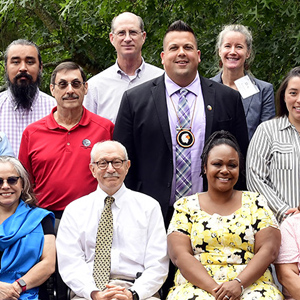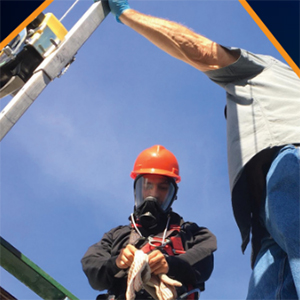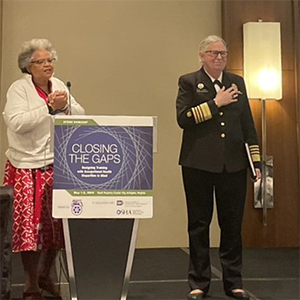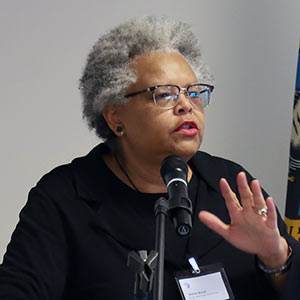The NIEHS Partnerships for Environmental Public Health (PEPH) network hosted a webinar highlighting organizations that train American Indian and Alaska Native workers and communities in hazardous materials safety, with funding from the NIEHS Worker Training Program (WTP). The Dec. 7 webinar was the first of two PEPH webinars featuring WTP grantees and their efforts to deliver safety and health training to tribal communities.
Helping underserved and rural tribes

WTP supports nonprofits across the U.S. that deliver training to workers who may face hazards on the job. WTP Director Sharon Beard spoke about grantee Western Region Universities Consortium (WRUC) and its efforts to reach underserved and rural American Indian tribes and Alaska Natives in the Southwest, Pacific Northwest, and Alaska.
Kevin Riley, Ph.D., principal investigator of WRUC, shared some of the common challenges that tribes and Alaska Native communities face when dealing with hazardous materials (HazMat), such as geographic isolation, transportation limitations, limited access to emergency response resources, and high rates of poverty and unemployment.
“HazMat issues vary considerably from one community to another,” Riley noted. “Issues related to household waste are common, but some areas deal with potential oil spills, contamination from mining and military activity, or transporting hazardous materials.”
Since 2014, WRUC has trained workers and community members in at least 75 American Indian tribes and Alaska Native villages, offering courses like Hazardous Waste Operations and Emergency Response (HAZWOPER), HazMat transportation, oil spill response, and many more.
Partnerships are critical
Mike Dunn, Ph.D., the program manager for the WRUC site at the University of Washington, explained the importance of partnerships in addressing the challenges tribes face.
“The solution is to find the right partners,” he stated. “We’re working in logistically complicated environments, but a regional partner can leverage existing partnerships and relationships to share costs, resources, business relationships, and equipment.”
Dunn also said partnerships can help drive initiatives by seeking and incorporating input from tribal communities.
To reach remote Alaska Native communities with trainings, WRUC partners with the nonprofit Zender Environmental Health and Research Group on their Rural Alaska Community Environmental Job Training (RACEJT) program. The program offers environmental technician training and job pathways for unemployed residents, to benefit rural Alaska communities disproportionately impacted by environmental health exposures.
HazMat professionals make big difference
Lynn Zender, Ph.D., executive director of Zender Environmental, has worked with Alaska Native groups since 1994. She presented some of the specific issues she has seen in her work, such as open landfills less than a mile from villages, a lack of groundwater testing for toxic leachate, and community dependence on burn boxes — large, often home-built, metal ovens for burning trash.
Zender shared a story from one RACEJT trainee who spoke about a family whose drying fish had been spoiled by smoke from a nearby burn box, a great loss to their winter food supply.
Having a trained and knowledgeable HazMat professional in a community, Zender noted, can make a big difference to the safety of the people and the environment.
“Most of the RACEJT graduates land jobs, and some will be the only environmental worker in their tribe or community,” Zender said. “Our goal is to have trained graduates in every community acting as first responders.”
“I joined the training last year,” said a trainee. “Right off the bat, right after I finished the class, I got hired. This training provided me with all the skills and things I needed to know before I got into this field.”
(Lee Cannon is a senior communications specialist for MDB, Inc., a contractor for the NIEHS Division of Extramural Research and Training.)









